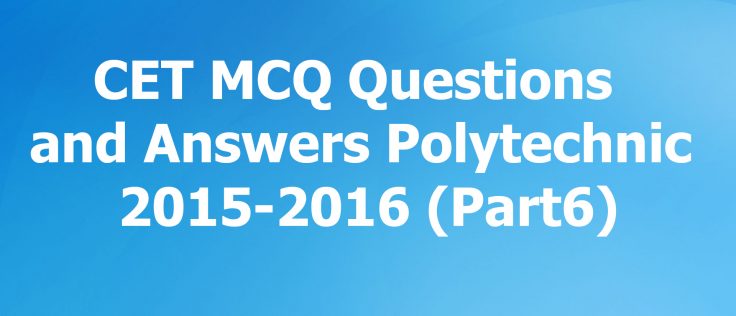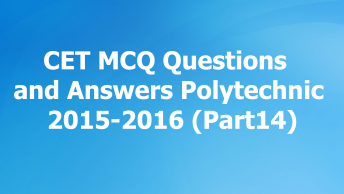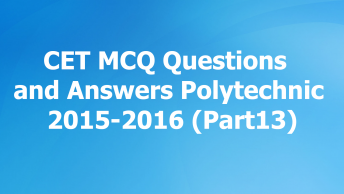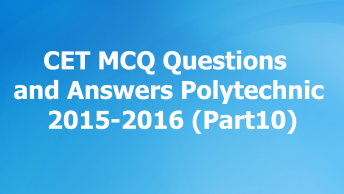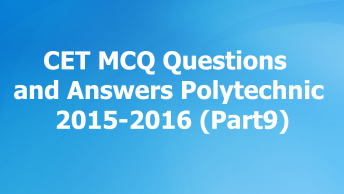Introduction of polytechnic
It is a diploma course.it is basically an educational institute that is offers practical education and training in technical field such as engineering , computer science .it is three year course.it focused on vocation education and career pathways.A polytechnic is an educational institution that offers technical and vocational training in various fields such as engineering, computer science applied sciences, and business studies. Polytechnic programs focus on practical skills and industry-oriented education, preparing students for careers in specific trades or for further studies in universities. These institutions play a crucial role in bridging the gap between academic knowledge and practical application, equipping students with hands-on experience and technical expertise.
CET MCQ questions and answers Polytechnic 2015-2016 (Part6)
Previous Year Questions and Answers Year 2015-2016 (MCQ with solutions)
51. Bleaching powder is prepared by passing chlorine gas through :
52. Arrange in order of increasing ionization energy :
53. Which one of the following possesses zero electron affinity
54. Which of the following is not a metalloid :
55. The modern classification of elements is based in the discovery of :
56. Who plotted the “atomic volume-atomic mass” curve ?
57. What is the number of periods present in the Modern Periodic Table :
58. Which of the following has the maximum non-metallic character

